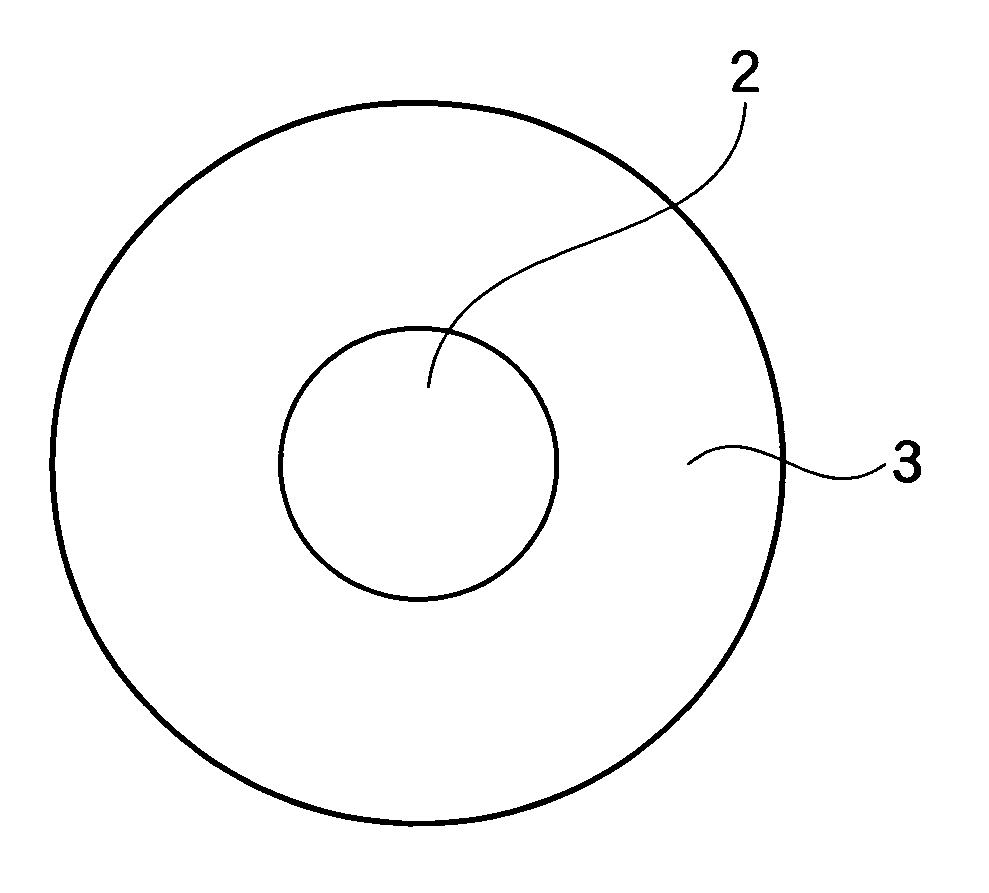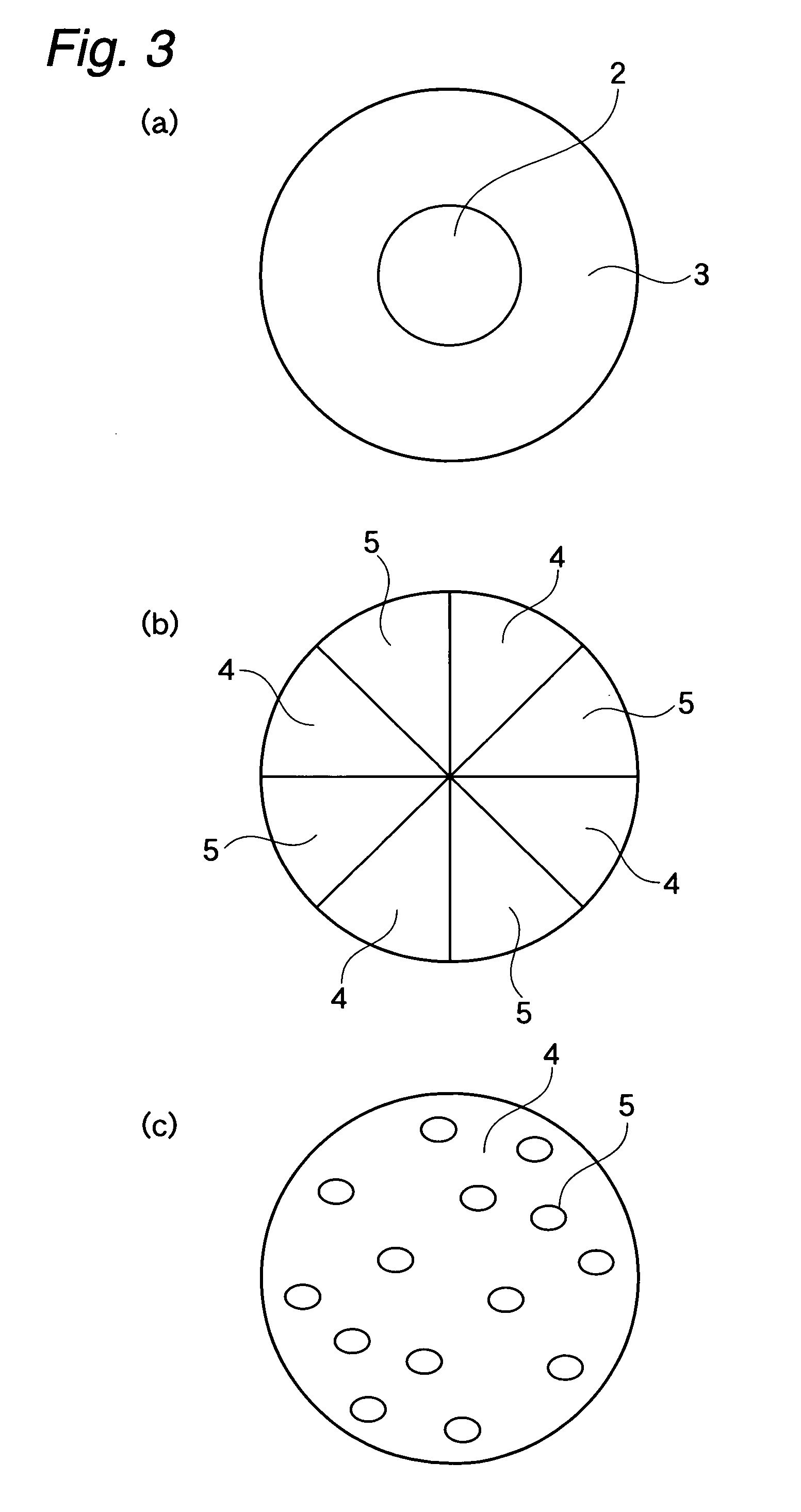Nonwoven fabric capable of being elongated and composite nonwoven fabric comprising said nonwoven fabric laminated
a nonwoven fabric and composite technology, applied in the field of nonwoven fabrics, can solve the problems of touch, unsatisfactory extensibility of traditional nonwoven fabrics made from monocomponent fibers, difficulty in diapering with such nonwoven fabrics, etc., and achieve the effect of the same melting poin
- Summary
- Abstract
- Description
- Claims
- Application Information
AI Technical Summary
Benefits of technology
Problems solved by technology
Method used
Image
Examples
example 1
[0099] PP1 and PP3 were melt spun into conjugate fibers which comprise the core portion of PP1 and the sheath portion of PP3. The resultant conjugate fibers having the concentric sheath-core configuration with a weight ratio of the core portion to the sheath portion of 10 / 90 (PP1 / PP3) were deposited on a collecting surface. The deposit was then heated and pressed with an embossing roll (embossing area percentage: 18%, embossing temperature: 120° C.) to give a spunbonded nonwoven fabric having a basis weight of 25 g / m2 and a fiber fineness of 3.5 denier. The spunbonded nonwoven fabric was tested to determine its properties. The results are shown in Table 2.
example 2
[0100] A spunbonded nonwoven fabric was produced with the procedure illustrated in Example 1 except that PP4 was used in place of PP3 in the sheath portion and that the embossing temperature was changed from 120° C. to 100° C. The spunbonded nonwoven fabric was tested to determine its properties. The results are shown in Table 2.
example 3
[0101] A spunbonded nonwoven fabric was produced with the procedure illustrated in Example 1 except that PP5 was used in place of PP3 in the sheath portion and that the embossing temperature was changed from 120° C. to 80° C. The spunbonded nonwoven fabric was tested to determine its properties. The results are shown in Table 2.
PUM
| Property | Measurement | Unit |
|---|---|---|
| extensibility | aaaaa | aaaaa |
| temperature | aaaaa | aaaaa |
| equilibrium melting point | aaaaa | aaaaa |
Abstract
Description
Claims
Application Information
 Login to View More
Login to View More - R&D
- Intellectual Property
- Life Sciences
- Materials
- Tech Scout
- Unparalleled Data Quality
- Higher Quality Content
- 60% Fewer Hallucinations
Browse by: Latest US Patents, China's latest patents, Technical Efficacy Thesaurus, Application Domain, Technology Topic, Popular Technical Reports.
© 2025 PatSnap. All rights reserved.Legal|Privacy policy|Modern Slavery Act Transparency Statement|Sitemap|About US| Contact US: help@patsnap.com



